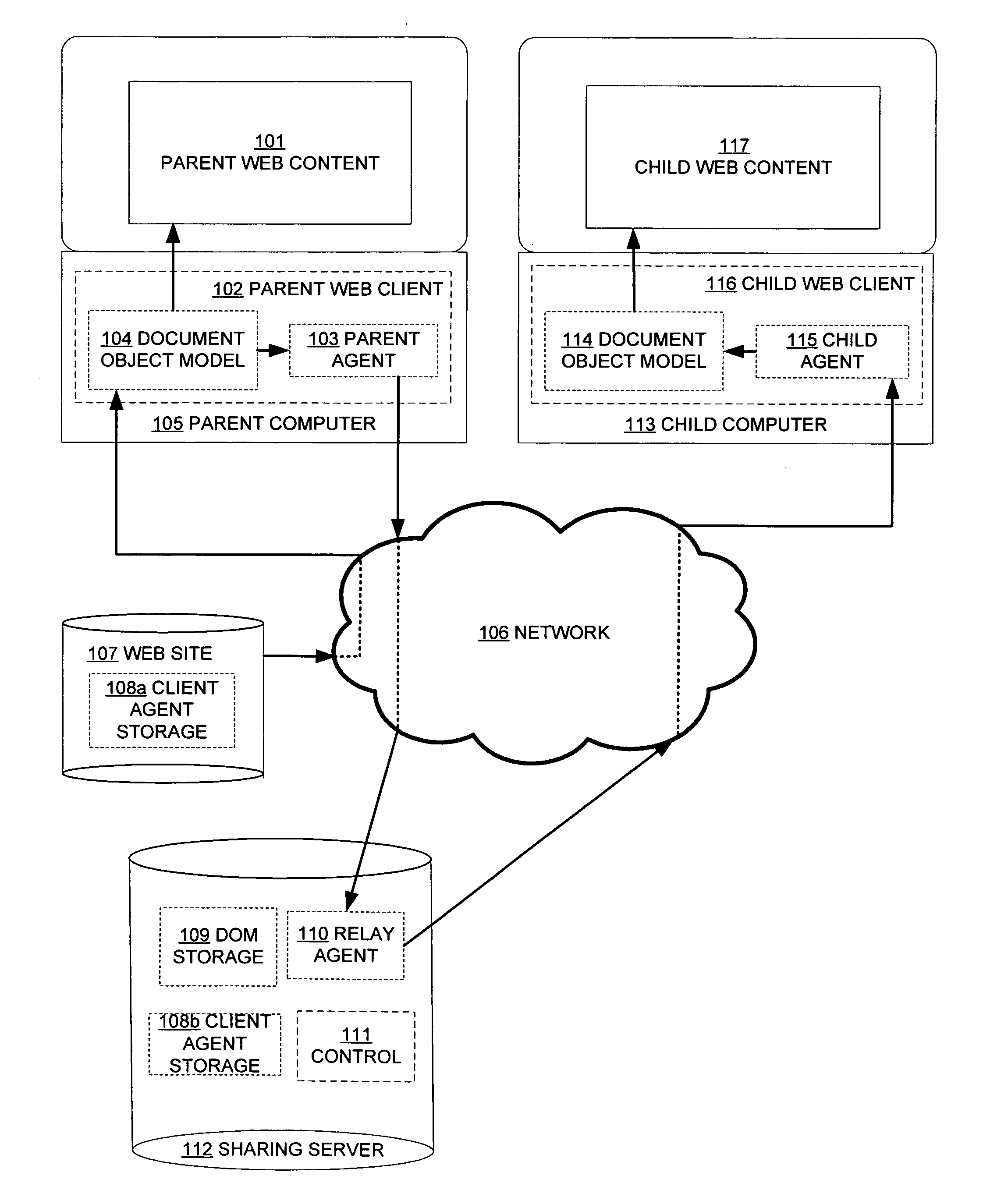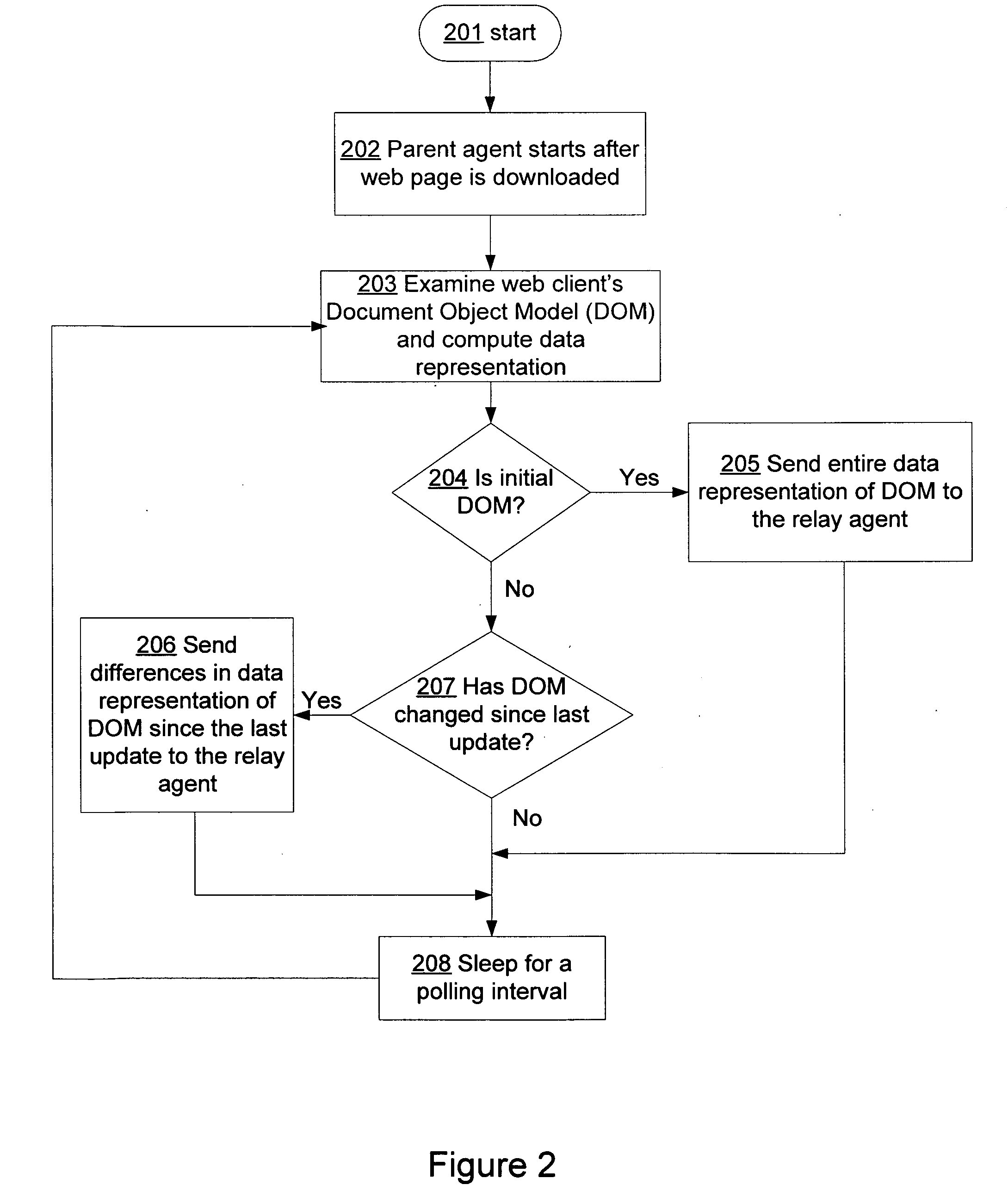Method and system to share content between web clients
a technology of web content and web client, applied in the field of communication system, can solve the problems of limiting the accessibility of shared content, ineffective sharing of web content by simply sharing urls, and not providing real-time interactivity
- Summary
- Abstract
- Description
- Claims
- Application Information
AI Technical Summary
Benefits of technology
Problems solved by technology
Method used
Image
Examples
Embodiment Construction
[0024]In one embodiment of the invention, the parent 102 and child 116 web clients (alternatively referred to as the “first” and “second” web clients, respectively) use standard DHTML compliant web browsers, such as Internet Explorer, FireFox or Safari running on a personal computer or mobile device such as a mobile phone. The web clients are connected to a network 106, such as a private network or the public Internet (FIG. 1's network 106 may be on the Internet). A single user's computer may have multiple web clients or multiple co-browsing sessions within a single web client (for instance, using multiple “tabs”). The use of multiple web clients or multiple sessions on a single web client could even allow a user to simultaneously be the parent of some sessions and a child of other sessions.
[0025]A co-browsing session can be initiated by the parent web client 102 accessing a web site 107 with the co-browsing agent integrated into the content returned from the web site 107. The agent...
PUM
 Login to View More
Login to View More Abstract
Description
Claims
Application Information
 Login to View More
Login to View More - R&D
- Intellectual Property
- Life Sciences
- Materials
- Tech Scout
- Unparalleled Data Quality
- Higher Quality Content
- 60% Fewer Hallucinations
Browse by: Latest US Patents, China's latest patents, Technical Efficacy Thesaurus, Application Domain, Technology Topic, Popular Technical Reports.
© 2025 PatSnap. All rights reserved.Legal|Privacy policy|Modern Slavery Act Transparency Statement|Sitemap|About US| Contact US: help@patsnap.com



